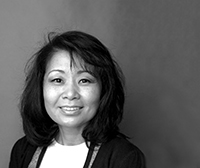 SAN FRANCISCO — Perkins + Will, with a location in San Francisco, designed the Campus for Research Excellence And Technological Enterprise (CREATE), a global research community that comprises three mid-rise buildings and a high-rise tower, in Singapore. The project earned the architecture firm a Laboratory of the Year last year for its unconventional lab design. The buildings are very narrow, and cores and corridors are located at the perimeter to introduce maximum daylight and flexibility. The universal module supports the full range of lab types from computational science, wet biology, dry chemistry, as well as office space. About 1,200 researchers from interdisciplinary research centers from top universities as well as from corporate laboratories across the world gather to collaborate within the space. The design uses advanced environmental sustainability and energy-efficient technologies, surpassing current flexibility and performance benchmarks for scientific research facilities in the tropics.
SAN FRANCISCO — Perkins + Will, with a location in San Francisco, designed the Campus for Research Excellence And Technological Enterprise (CREATE), a global research community that comprises three mid-rise buildings and a high-rise tower, in Singapore. The project earned the architecture firm a Laboratory of the Year last year for its unconventional lab design. The buildings are very narrow, and cores and corridors are located at the perimeter to introduce maximum daylight and flexibility. The universal module supports the full range of lab types from computational science, wet biology, dry chemistry, as well as office space. About 1,200 researchers from interdisciplinary research centers from top universities as well as from corporate laboratories across the world gather to collaborate within the space. The design uses advanced environmental sustainability and energy-efficient technologies, surpassing current flexibility and performance benchmarks for scientific research facilities in the tropics.
Perkins + Will is now creating a similar community-based district for innovation for researchers at the University of California, Davis, as well as the Davis community. School Construction News spoke with Rachel Lee, AIA, LEED AP, senior associate at Perkins + Will and senior project architect for the CREATE project, about the Singapore research complex and this trend of creating innovation communities.
Q: Why do you think more schools are putting an emphasis on centers for innovation?
Lee: Centers for innovation provide places that bring together students and researchers from diverse backgrounds to create an environment that promotes thinking and learning in an entirely different way. Both students and researchers are able to make novel and fresh connections that encourage innovative solutions.
Q: How does the CREATE project reflect that trend?
Lee: CREATE is an embodiment of a concept about providing a center for innovation where people with differing perspectives and disciplines come together to create the next generation of innovative solutions.
Q: What were some of the key design elements involved?
Lee: One key element was to create many open, collaborative spaces throughout the complex, which provided ample and natural opportunities for people to meet, interact and collaborate. As a result, collaboration is ultimately the result of the overall design of the entire complex.
Additionally, modular and adaptable design was the main concept of the laboratories. This type of adaptable design allowed researchers not to be hindered by rigid and fixed spaces. One could easily and quickly change their working environment to suit the changing needs of researchers and labs throughout their research process.
Q: What are some of the challenges on these types of projects, specifically CREATE, and how did you overcome those challenges?
Lee: One of the biggest challenges with CREATE was to accommodate researchers from very diverse backgrounds and cultures. As a result of all of various cultures and needs coming together, each researcher had a different idea of what the ideal laboratory setting needed to look like. Our final solution was implementing a design that was not only simple but modular and universally understood.
Q: Did you receive any feedback from students and staff while working on the project? If so, what was it?
Lee: The students and staff loved the natural open setting of the complex and the flexibility of their lab and meeting spaces.

